- Home
- Peter Ackroyd
Albion: The Origins of the English Imagination Page 7
Albion: The Origins of the English Imagination Read online
Page 7
Once more we may see the hand of Bede behind a formative development in English letters. He composed a life of St. Cuthbert in Latin hexameter verse before he completed one in prose, once more emphasising that there is no necessary disparity between the two genres. He was the first English writer to give historical substantiality to the accounts of the martyrs of the early Church, and began the tradition of what might be called secular as opposed to saintly biography with his Lives of the Abbots of Wearmouth and Jarrow. These lives are as short as those written by Johnson or Strachey, and they manifest what has become the customary English interest in character and circumstance; they dwell upon the practical details of living, too, albeit succinctly described.
Another life might be ventured in this context, since it is the first example of “travel literature” in English and as such represents one of the true origins of the English imagination. The Voyage of St. Brendan has been described as one of the great mythological narratives of the Christian West, but it has also been interpreted as an actual account of a sea journey to Newfoundland or Iceland; the Elizabethan magus John Dee included the text in his argument that England held original dominion over America itself. It has also been described as “one of the most famous and enduring stories of Western Christendom.”2
Brendan and fourteen brethren set out to sea in a coracle of wood and tanned oxhide; after forty days they land upon a rocky island where a great hall and miraculous feast appear to comfort them; yet here the devil, in the shape of “a little Ethiopian boy holding out a silver necklace and juggling with it,”3 comes to tempt them. On another island they discover herds of giant sheep, and afterwards build their camp upon the back of a great whale; in another place they encounter flocks of speaking birds who explain to Brendan that they are fallen angels. At the time of Vespers, the birds sing a hymn in praise of God and beat their wings against their sides “as sweet and moving as a plaintive song of lament.”4 On a yet more distant island they visit an enchanted monastery and on another they converse with a man, crouching upon a rock, who announces himself as Judas Iscariot. It is a delightful story, which can be seen as the harbinger of Utopia, Robinson Crusoe and Gulliver’s Travels; it contains the close detail of a journey, complete with leather water-bottles and preservative salt, combined with the most extraordinary allegorical intent. It may have been the work of a British or Irish, rather than a Saxon, monk but it introduces that line of fanciful or fantastic travel-writing which has become so much part of the English genius.
There is one other enduring contribution which the now forgotten genre of saints’ lives may be said to establish. Their stories spilled over into drama, and by the early twelfth century saints’ plays were a recognised element of the “miracle plays” and had become a popular form of theatre. The appetite for biography, especially of the more sensational kind, was satisfied with plays upon St. Katherine, St. George, St. Thomas the martyr, St. Swithin, St. Andrew and many others. The drama was elicited by the confrontation between pagan and Christian, these spirited dialogues complemented by details of torture or martyrdom and by the manifestations of signs and wonders. There was comedy as well as tragedy, with Jews or pagan rulers as stock comic characters, but more significantly it has been suggested that “the Elizabethan history plays . . . seem most likely to be descended” from these saints’ plays “in terms of character, structure and thematic development.”5 Just as the Tudor drama derived in part from Anglo-Saxon scholastic debate, so the sequence of Shakespeare’s history plays owes many of its themes and much of its symbolism to this genre of Anglo-Saxon prose. The noble origins of St. Guthlac, a man whose eminence sprang out of a wayward youth, bear some relation to Shakespeare’s Henry V; the saint’s musings upon the death of kings, and the transitory nature of all human power, provide the context for Richard II.
It has been suggested that the first English tragedy was not Gorboduc, as the text-books insist, but a play entitled Life of St. Thomas à Becket otherwise known as St. Thomas of London. It was performed as early as 1182, twelve years after Becket’s death, and was still being dramatised as late as 1539. The extant prose lives of the saint emphasise the historical context of his career and the specific circumstances of his death as ordered by Henry II; the theme is one of conscience, of spiritual determination, and murder for the sake of them both. It is difficult to believe that the dramatic versions differed very greatly in content or intent, so there is a distinct possibility that “we have a tradition of English tragedy existing over a period of 360 years and to within fifteen years of the first recorded tragedy in 1554 . . . a continuously developing form from the twelfth century all the way through the Renaissance.” 6
Nothing can come out of nothing; King Lear has its roots in mummers’ plays, which are themselves derived from Anglo-Saxon saints’ lives. T. S. Eliot’s Murder in the Cathedral, a verse drama on the death of Thomas Becket, is a manifest sign of continuities stretching back a thousand years. They may occur in specific, as well as general, contexts. One collection of lives, Sawles Warde, contains the words “the derne beoth ant deopre then ani sea dingle”; they are co-opted by W. H. Auden in his opening line, “Doom is dark and deeper than any sea-dingle.”
CHAPTER 8
A Land of Dreams
One scholar of early English civilisation, J. R. R. Tolkien, came upon a line of Cynewulf’s poetry—“Eala earendel, engla beorhtost!,” “Hail Earendel, most bright angel”—and was consumed by it.
Tolkien himself was a Catholic born in South Africa but brought up in Birmingham and its environs, part of the old Mercian kingdom from which Cynewulf himself is supposed to have sprung. Was there some consonance which led directly to The Lord of the Rings? When Tolkien read the invocation to Earendel, the star of the morning known to us as Venus, “I felt an unconscious thrill, as if something had stirred me, half-wakened, from sleep. There was something very remote and strange and beautiful behind those words, if I could grasp it, far beyond Ancient English.”1 It was his imagination which was awakening, stirred by ancient voices.
There was a star of the morning already risen in the seventh century; his name was Caedmon, the first Christian poet in the English language. The legend of his origin comes from the pages of Bede’s Historia Ecclesiastica Gentis Anglorum. Caedmon was a herdsman at the monastery of Whitby, known then as Streones Healh or Streanaeshalch. He was of a modest nature, and had no pretensions to poetical skill; when the harp was handed from guest to guest at a feast, no doubt to recite episodes from a native poetry which is now entirely lost, Caedmon would leave the table and return to his hut. One evening he had retired to the stable, where he had been posted that night to care for the animals, and had slept; then in dream he saw a man standing beside him.
“Caedmon, sing me a song.”
“I have no skill in singing. That is the reason I left the feast and retired here.”
“But you will sing to me.”
“What shall I sing?”
“Sing the song of creation.”
Then at once, in his dream, Caedmon chanted a hymn of nine lines which opens, “Nu scylun hergan, haefaenricaes uard”—“Now shall we praise the maker of the heavenly kingdom.” It is significant that, at this point in his narrative, Bede chose to translate the poem into Latin rather than render it in its Old English original; he may have considered the pagan implications of Caedmon’s strong alliterative verse to be still too potent.
On awakening, Caedmon added more verses, and then visited the reeve of the monastery to tell his story of the night and the vision. The reeve then took him before the Abbess of Whitby, Hilda, a great religious leader of the era. She asked him to repeat his story, and his song, to a group of learned clerics who deemed his vision to be the work of God. Caedmon was admitted as a brother to the monastery and, on being educated in the scriptures, composed many verses on such sacred themes as the Incarnation, the Passion, the Resurrection, and the Last Judgement.
The miraculous event heralded a great change
in the nature of the English imagination, since for the first time the old songs of the tribe were redeployed to state the truths of the Christian faith. From the testimony of Bede these poems were written down. Only the transcription of Caedmon’s hymn, however, survives in eighth-century manuscripts; its popularity is attested by the fact that there are no fewer than twenty-one extant versions, so that it can truly be said that Caedmon’s hymn originates the great sequence of religious poetry in the English language. It is in fact the earliest survival of all English poetry; as an epigraph to the poem is written: “Caedmon first sang this song.”
There are certain suggestive details. The name of Caedmon itself is deemed to be of Celtic origin, intimating in turn that he was of native British descent working originally as an agricultural labourer for the ruling Anglo-Saxon tribe. So it might be said that the poetry of England rises naturally from the common stock like a melody of the land. The seventh-century dream of Caedmon is also uncannily reminiscent of William Blake’s late eighteenth-century vision in the “Introduction” to Songs of Innocence:
Piper pipe that song again— So I piped, he wept to hear
Pipe that song, and sing that song to me; it represents the same injunction to the rapt poet. Whether it be dream or vision, it represents an inspiration which has not yet died.
England is a land of dreams. A letter from a French cleric to Nicholas of St. Albans, written c. 1178, rehearsed what was already a familiar perception:
Your island is surrounded by water, and not unnaturally its inhabitants are affected by the nature of the element in which they live. Unsubstantial fantasies slide easily into their minds. They think their dreams to be visions, and their visions to be divine. We cannot blame them, for such is the nature of their land. I have often noticed that the English are greater dreamers than the French.2
For several centuries the English were characterised as “seers of visions,” and it cannot be said that the tradition has materially diminished in the work of Herbert, Traherne, Bunyan, Blake, Spenser and Keats. Whether it resembles a Celtic inheritance is open to enquiry; the Druidic priests were believed to harbour visionary powers. And how could it be otherwise on an island which, in the earliest histories, was itself established upon a vision? The goddess Diana appeared before Brutus with the news that: “Beyond the realm of Gaul, a land there lies, sea-girt it lies, where giants dwelt of old. Now void it fits thy people . . . And kings be born of thee, whose dreaded might shall awe the world and conquer nations bold.”
In his history of England, published in 1670, John Milton recounts the narrative of Brutus and Albion in a plain and sober manner as if no willing suspension of disbelief were required. The earliest historical records are filled with manifold visions. Bede’s History recounts the vision of King Edwin when “he saw a man approaching whose face and appearance were strange to him”;3 the unexpected visitor laid his right hand upon Edwin’s head, and disappeared. A monk named Fursey, who established a monastery among the East Angles, was taken up by angels to witness the life after death. One of the brothers in Bede’s own monastery had heard the story from Fursey’s own lips: “He added that it was a frosty and bitter winter’s day when Fursey told his story; and yet, though he wore only a thin garment, he was sweating profusely.”4 Visions, then, were taken as serious and earnest tokens of divine providence, even and perhaps especially by intelligent and learned men such as Bede. Chad, the Bishop of the Mercians, was greeted by angelic spirits who promised to return within a week and carry his soul with them to heaven; there are many accounts of lights descending from the sky upon the earth, usually taken to be the bright trail of angels. A nun in the community of Barking saw a vision of a departed abbess, Ethelburga, to whom she spoke in the following terms: “I am so glad that you have come; you are most welcome. . . . This is not happy news. . . . If it cannot be today, I beg that it may not be long delayed.” She was addressing the spirit of her own approaching death.
Bede spoke to those who had seen visions, or spirits, in order to verify their stories because it may be that they had suffered from “delusion.” One seemed to him wholly genuine, a vision like those that had occurred in the “old days” of Celtic Britain. A monk named Drylhelm, from the country of the Northumbrians, was escorted by an angel to a “very broad and deep valley of infinite length” where the condemned souls of the departed were tossed in fire “dreadful with burning flames.” 5 It is unlikely that John Bunyan read this account, but his own image of the “Valley of the Shadow of Death” with “the flame and the smoke,” envisioned a thousand years later in The Pilgrim’sProgress , is part of a continuous tradition. Drylhelm was taken back to the living world, where he spoke only to a few devout contemporaries about his experience. When bathing in a freezing river, with the blocks of ice floating around him, he was engaged in conversation.
“It’s wonderful how you can manage to bear such bitter cold.”
“I have known it colder.”
When urged to alleviate his own watchful self-discipline, he similarly replied: “I have seen greater suffering.”6 It has often been suggested that understatement is a national characteristic.
In Bede’s Life of St. Cuthbert the historian describes how the saint was visited by blessed spirits: “Angels would often appear and talk with him and when he was hungry he was refreshed with food by the special gift of God.”7 Eleven hundred years later William Blake was in a similar fashion visited by angels; perhaps they were the same ones. Blake had been reading Edward Young’s Night Thoughts, a volume of mid-eighteenth-century verse in the English melancholy tradition, when a voice spoke to him; he looked across his chamber but saw nothing “save a greater light than usual.” Blake “looked whence the voice came,” and was then aware of a shining shape, with bright wings, who diffused much light. “As I looked the shape dilated more and more: he waved his hands; the roof of my study opened; he ascended into Heaven; he stood in the sun and, beckoning to me, moved the universe.”
It was not the first, or only, vision vouchsafed to William Blake. He had seen angels in the mulberry trees of Peckham Rye; he saw God and Ezekiel. Throughout his life he was surrounded by visionary companions, many of whom he sketched or painted. He saw a vision of his departed brother, Robert, as the spirit left the body “clapping its hands for joy”; this closely resembles the visions reported by Bede, including that of the Abbess Hilda who upon her death was “borne up to Heaven in the midst of the light.” Blake also drew visionary heads—those, for example, of Herod, Socrates and Voltaire—which have the hypnagogic quality of faces hovering or dissolving in a dream and are not at all dissimilar to those depicted by English painters of the thirteenth century. In fact Blake, who called himself “English Blake,” is a significant example of an artist who instinctively aligns himself with an ancient English tradition which then, as it were, reassembles itself all around him. Thus he wrote in the first chapter of his epic poem Jerusalem,
. . . Amen! Huzza! Selah! “All things Begin & End in Albion’s Ancient Druid Rocky Shore”
Is it, then, any wonder that like his predecessors in Mercia and Northumbria Blake saw visions of angels?
Out of this land of visions emerges a poetry of the dream-world. Beowulf is in part a dream-poem; the strange elegies of the Anglo-Saxon spirit are enacted in unreal landscapes compounded of dream and vision. Beowulf himself follows Grendel’s mother through “frecne fen-gelad,” a terrifying fen path, towards a tarn or mere where flickers “fyr on flode” hiding an ancient terror. Perhaps only the Anglo-Saxons were capable of such horror, although the persistent taste for Gothic in English literature suggests that their influence has lingered.
Dreams themselves were not necessarily to be distinguished from visions; there was a class of “dream-readers” who could distinguish between “visio” or “osculum” and mere “ insomnium.” The dreamers of the tribe were highly praised because in their state of charmed sleep they were able to unite heaven and earth. The knights of Arthur pursued a vis
ion of the Holy Grail, while the king himself was subject to many and disturbing dreams which prophesied devastation and ruin; the more historically established King Alfred, according to his first biographer, dreamed of St. Neot of Cornwall, who guided him to victory over the Viking army at Edington.
Medieval literature is filled with dream-visions. The great poem of hope and penitence Pearl unfolds within a landscape of dream where the dreamer declares that his soul or “goste” is “ gon in Godez Grace.” In the prologue of Piers the Plowman , Langland confesses how he wandered upon Malvern Hills, went astray and fell asleep beside a stream where “thanne gan I to meten a merueilouse sweuene,” a marvellous dream. Within that same Malvern landscape, as exemplified in The Dream of Gerontius, Elgar awoke in 1900 and found Langland’s dream to be true. It is reminiscent of the opening line of the Old English poem The Dream of the Rood, “Hwaet, ic swefna cyst secgan wylle,” “Listen, I will speak to you of a wonderful dream.” Langland sleeps and wakes, yet always finds himself enclosed within a further dream so that the reader or listener becomes involved in the wilderness of the dreamscape until the last line of the “B” text, “til I gan awake.” Wynnere and Wastour opens in dream and Chaucer perfected the art of the dream-vision in The Parliamentof Fowls, The House of Fame and The Book of the Duchess. In each of them he falls asleep over a book, which then lingers within his dream, as if there were some deep connection between individual silent reading and sleeping. The earliest English readers must have seemed withdrawn into themselves in quite an unusual way; like the dreamer, they were somewhere between sleep and death.
Yet the dream of England spread further. The site of the second Salisbury Cathedral, laid in 1221, was found in a dream; that great late fourteenth-century masterpiece known as the “Wilton Diptych” has been described by one scholar of the period as displaying “the mystical dreaminess of mood” which was characteristic of “the English version of the International Style.”8 The same spirit animated Edward Burne-Jones when, in the late nineteenth century, he remarked: “I mean by a picture a beautiful romantic dream of something that never was, never will be . . .” This is the dream of Edmund Spenser, who, in as high and artificial a poetic language as that of the Anglo-Saxon bards, creates the enchanted landscape of The Faerie Queene. His melody, with each stanza prolonged to melting point, lies beyond time and the waking reality of consciousness:

 The Clerkenwell Tales
The Clerkenwell Tales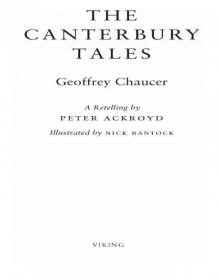 The Canterbury Tales
The Canterbury Tales J. M. W. Turner
J. M. W. Turner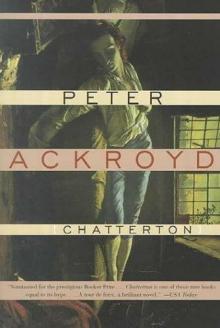 Chatterton
Chatterton The Canterbury Tales – A Retelling
The Canterbury Tales – A Retelling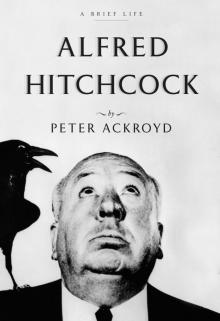 Alfred Hitchcock
Alfred Hitchcock Three Brothers
Three Brothers Wilkie Collins
Wilkie Collins Venice
Venice Poe
Poe The Lambs of London
The Lambs of London London
London Queer City
Queer City Revolution, a History of England, Volume 4
Revolution, a History of England, Volume 4 Venice: Pure City
Venice: Pure City Foundation
Foundation Thames
Thames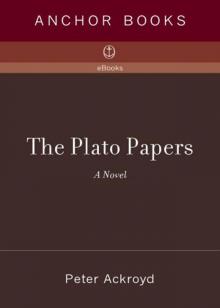 The Plato Papers
The Plato Papers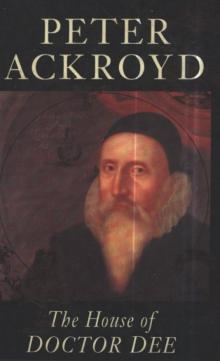 The house of Doctor Dee
The house of Doctor Dee Rebellion: The History of England from James I to the Glorious Revolution
Rebellion: The History of England from James I to the Glorious Revolution Albion: The Origins of the English Imagination
Albion: The Origins of the English Imagination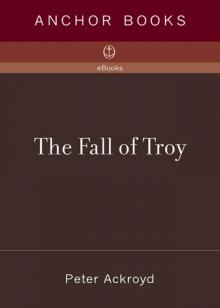 The Fall of Troy
The Fall of Troy The Death of King Arthur
The Death of King Arthur The Trial of Elizabeth Cree
The Trial of Elizabeth Cree London: The Biography
London: The Biography The Casebook of Victor Frankenstein
The Casebook of Victor Frankenstein Hawksmoor
Hawksmoor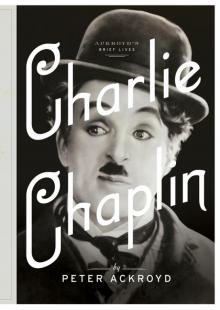 Charlie Chaplin
Charlie Chaplin London Under
London Under